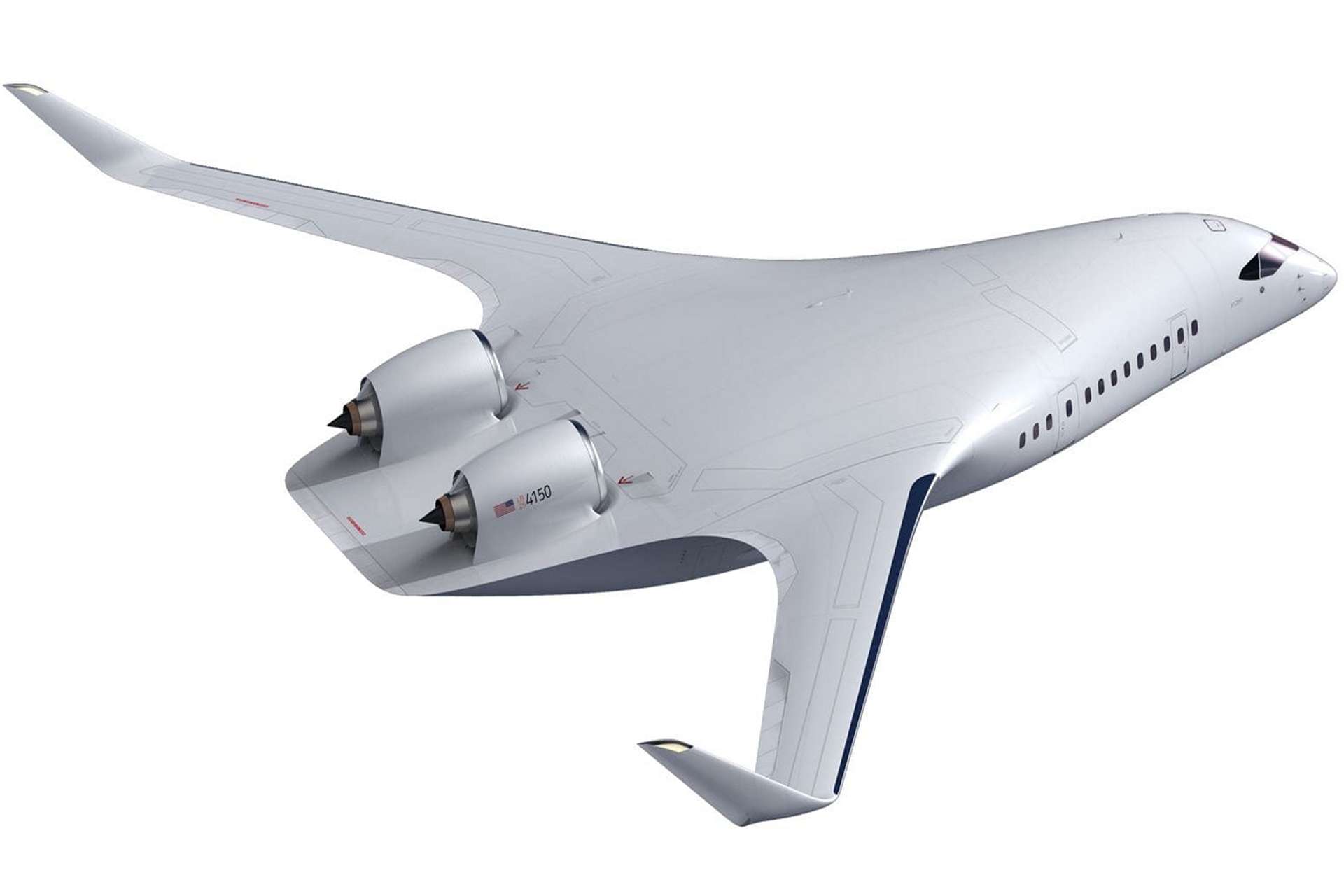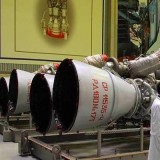RTX to Lead Engine Integration for JetZero’s Blended Wing Aircraft

{loadposition bannertop}
{loadposition sidebarpub}
RTX has signed three major agreements with JetZero, a company pioneering the development of a blended wing body aircraft, to provide essential systems for the airframer’s full-scale demonstrator. These partnerships see Pratt & Whitney, an RTX company, integrating the PW2040 engine and auxiliary power unit (APU), while Collins Aerospace, also a subsidiary of RTX, will supply the nacelles and propulsion mounting structures for this innovative aircraft concept.
Follow Army Recognition on Google News at this link
RTX has signed three major agreements with JetZero, to provide essential systems for the airframer’s full-scale demonstrator. (Picture source: RTX)
True to its commitment to advancing aerospace technologies, RTX is ideally positioned to contribute to JetZero’s mission, which aims to redefine the future of aviation. This collaboration highlights the shared ambition of providing more efficient fuel consumption solutions, reducing operational costs for both commercial and military aviation.
“The aviation industry is focused on reducing operational costs through improved energy efficiency, and RTX has a comprehensive portfolio of technologies to help companies like JetZero achieve this goal,” said Juan de Bedout, RTX’s Chief Technology Officer. “Through this partnership, we will play a key role in redefining the future of aviation, both for the commercial and military sectors.”
Dan da Silva, Chief Operating Officer of JetZero, expressed his enthusiasm for the project’s progress. “Securing partnerships for the propulsion systems of the demonstrator marks an important milestone in our journey from design to testing and ultimately to demonstration. Our collaboration with RTX, along with their proven experience, is an excellent example of the investment and trust the industry has in the blended wing aircraft concept,” he added.
JetZero’s ambition is to reduce fuel consumption by 50% through the aerodynamic efficiency of its blended wing design. The company plans to begin test flights in 2027 and aims to deliver this innovative aircraft to customers in the near future.
The latest agreements between RTX and JetZero underscore the strength of their partnership and outline the systems RTX will provide for the aircraft’s demonstrator. These systems include advanced propulsion technology that will play a central role in validating the aircraft’s revolutionary design.
Under these agreements, RTX’s Pratt & Whitney and Collins Aerospace divisions will deliver the following systems. Pratt & Whitney will integrate the PW2040 engine, part of the PW2000 engine family. This engine generates between 37,000 and 43,000 pounds of thrust and has been a key element in Boeing 757 models, with the F117 military derivative engine serving as the exclusive powerplant for the C-17 Globemaster III aircraft. The PW2040 model also powers the US Air Force’s C-32A, the military version of the Boeing 757.
Pratt & Whitney Canada will supply the APS3200 APU, which incorporates advanced manufacturing techniques, including the use of composites. Nearly 3,800 units of the APS3200 APU have been manufactured and certified for a wide range of aircraft, providing a proven and reliable solution.
Collins Aerospace, for its part, will design and manufacture the nacelle structures, including the inlet, fan cowl, fan duct, as well as the fairings and engine support structure. Collins has extensive experience in the design, certification, and manufacture of nacelles for large commercial aircraft programs, such as the Boeing 787, Airbus A350, A320neo, A220, and Embraer E2.
The full-scale demonstrator developed by JetZero will play a crucial role in validating key technologies that could benefit numerous applications. Although initially focused on commercial aviation, the technologies being tested could also have significant implications for military aviation. For example, the blended wing design could be used for future cargo transports, military aircraft, and even a potential aerial refueling tanker, offering better energy efficiency and improved operational performance.
By focusing on innovation and technological advancement, RTX and JetZero are paving the way for more sustainable and efficient aerospace solutions. As the aviation industry continues to evolve, this collaboration represents an important step toward achieving greater energy efficiency and redefining aircraft design for future generations.
As both companies progress toward completing the demonstrator, all eyes will be on the first test flights scheduled for 2027, with high expectations for the potential of JetZero’s blended wing design to transform aviation.

{loadposition bannertop}
{loadposition sidebarpub}
RTX has signed three major agreements with JetZero, a company pioneering the development of a blended wing body aircraft, to provide essential systems for the airframer’s full-scale demonstrator. These partnerships see Pratt & Whitney, an RTX company, integrating the PW2040 engine and auxiliary power unit (APU), while Collins Aerospace, also a subsidiary of RTX, will supply the nacelles and propulsion mounting structures for this innovative aircraft concept.
RTX has signed three major agreements with JetZero, to provide essential systems for the airframer’s full-scale demonstrator. (Picture source: RTX)
True to its commitment to advancing aerospace technologies, RTX is ideally positioned to contribute to JetZero’s mission, which aims to redefine the future of aviation. This collaboration highlights the shared ambition of providing more efficient fuel consumption solutions, reducing operational costs for both commercial and military aviation.
“The aviation industry is focused on reducing operational costs through improved energy efficiency, and RTX has a comprehensive portfolio of technologies to help companies like JetZero achieve this goal,” said Juan de Bedout, RTX’s Chief Technology Officer. “Through this partnership, we will play a key role in redefining the future of aviation, both for the commercial and military sectors.”
Dan da Silva, Chief Operating Officer of JetZero, expressed his enthusiasm for the project’s progress. “Securing partnerships for the propulsion systems of the demonstrator marks an important milestone in our journey from design to testing and ultimately to demonstration. Our collaboration with RTX, along with their proven experience, is an excellent example of the investment and trust the industry has in the blended wing aircraft concept,” he added.
JetZero’s ambition is to reduce fuel consumption by 50% through the aerodynamic efficiency of its blended wing design. The company plans to begin test flights in 2027 and aims to deliver this innovative aircraft to customers in the near future.
The latest agreements between RTX and JetZero underscore the strength of their partnership and outline the systems RTX will provide for the aircraft’s demonstrator. These systems include advanced propulsion technology that will play a central role in validating the aircraft’s revolutionary design.
Under these agreements, RTX’s Pratt & Whitney and Collins Aerospace divisions will deliver the following systems. Pratt & Whitney will integrate the PW2040 engine, part of the PW2000 engine family. This engine generates between 37,000 and 43,000 pounds of thrust and has been a key element in Boeing 757 models, with the F117 military derivative engine serving as the exclusive powerplant for the C-17 Globemaster III aircraft. The PW2040 model also powers the US Air Force’s C-32A, the military version of the Boeing 757.
Pratt & Whitney Canada will supply the APS3200 APU, which incorporates advanced manufacturing techniques, including the use of composites. Nearly 3,800 units of the APS3200 APU have been manufactured and certified for a wide range of aircraft, providing a proven and reliable solution.
Collins Aerospace, for its part, will design and manufacture the nacelle structures, including the inlet, fan cowl, fan duct, as well as the fairings and engine support structure. Collins has extensive experience in the design, certification, and manufacture of nacelles for large commercial aircraft programs, such as the Boeing 787, Airbus A350, A320neo, A220, and Embraer E2.
The full-scale demonstrator developed by JetZero will play a crucial role in validating key technologies that could benefit numerous applications. Although initially focused on commercial aviation, the technologies being tested could also have significant implications for military aviation. For example, the blended wing design could be used for future cargo transports, military aircraft, and even a potential aerial refueling tanker, offering better energy efficiency and improved operational performance.
By focusing on innovation and technological advancement, RTX and JetZero are paving the way for more sustainable and efficient aerospace solutions. As the aviation industry continues to evolve, this collaboration represents an important step toward achieving greater energy efficiency and redefining aircraft design for future generations.
As both companies progress toward completing the demonstrator, all eyes will be on the first test flights scheduled for 2027, with high expectations for the potential of JetZero’s blended wing design to transform aviation.




